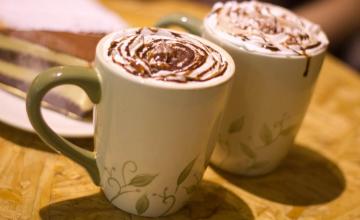Brazilian fine coffee with typical iodine flavor Taste Manor Features
The Portuguese expedition established a colony in Pakistan in the 1630s. The Governor was appointed in 1549. The entire colony was then United along the Atlantic coast under Portuguese rule. The French invaded in 1555, occupied the equivalent of present-day Rio de Janeiro, and intended to set up a French colonial stronghold in South America. However, because the French were unable to attract colonists from Europe, they were finally expelled from Rio by the Portuguese in 1565. Two years later, the Portuguese founded the city of Rio. Portuguese supremacy in the Brazilian colonies did not face challenges again until 1630, when Brazil was located in southeastern South America, straddling 35 to 74 degrees west longitude and 5 degrees north to 35 degrees south latitude. It is bordered by the South Atlantic Ocean to the east and any country in South America to the north, west and south (except Chile). It is bordered by French Guiana, Suriname, Guyana, Venezuela and Colombia to the north, Peru and Bolivia to the west, and Paraguay, Argentina and Uruguay to the south. The coastline is about 7400 kilometers long. The width of the territorial sea is 12 nautical miles and the overseas exclusive economic zone is 188 nautical miles. [7]
Brazil is the largest country in South America, with a territorial area of 8.5149 million square kilometers, accounting for about 46 percent of the total area of South America, ranking fifth in the world after Russia, Canada, China and the United States. Brazil ranks fifth in proven iron ore reserves, accounting for 9.8 percent of the world's total reserves, ranking fifth in the world; its output is 355 million tons, ranking second in the world; and its exports are also among the highest in the world. Brazil is rich in 29 kinds of minerals, with nickel reserves of 6 million tons, accounting for 4.0% of the world's nickel reserves, mainly distributed in Goas and Minas Gerais. Manganese, bauxite, lead, tin and other metals account for more than 10% of the world's total reserves. The niobium ore reserves have been proved to be 4.559 million tons, which can be used globally for 800 years according to the current consumption. In addition, there are abundant chromium ore, gold ore and asbestos ore. The proved reserves of the coal mine are 10.1 billion tons, but the grade is very low. Since 2007, Brazil has successively discovered large oil and gas fields along the southeast coast, and its oil reserves are expected to exceed 50 billion barrels, making it one of the top ten oil countries in the world. The forest coverage rate reached 57%. The wood reserve is 65.8 billion cubic meters. Rich in hydraulic resources, with 18% of the world's fresh water, 29000 cubic meters of fresh water per capita, and water conservancy reserves of 143 million kilowatts per year
Although coffee is diverse, Brazilian coffee is suitable for the taste of the public. For example, coffee produced in the northern coastal areas has a typical iodine taste, reminiscent of the sea after drinking. This coffee is exported to North America, the Middle East and Eastern Europe. Another kind of coffee that is interesting and worth looking for is washed Bahia coffee. This kind of coffee is not easy to find, because after the United States, Brazil is the largest consumer of coffee in the world. Many good coffee can only be found in its domestic market. Other kinds of Brazilian coffee, such as Rio and Parana, can be produced in large quantities because they do not need too much care. Although the taste is rough, it is a kind of coffee with good quality and low price. Because it is distributed all over Brazil and its solid quality varies, it has its own standard (NO.2-NO.8 according to the number of sundries, NO.13-NO.19 according to the size of beans, and six grades according to taste. Brazil is in the tropics, and the north is a tropical rain forest climate, hot and humid all the year round, suitable for tropical crops. Coffee is a sunny crop. Sufficient sunlight is the condition for its growth. Historically, Brazil has been a Portuguese colony for a long time. In order to meet the needs of Western Europe, it has planted single crops for a long time and developed the tropical plantation economy, so Brazilian coffee has been its pillar industry for a long time. From the market point of view, coffee and its processed products are rich in caffeine, exhilarate and play an important role in the working group dominated by mental workers, so they play a huge role in modern society, so the market is broad. To sum up, Brazil's coffee production is the world's largest trickle filter: wet coffee powder with water, allowing the coffee liquid to flow through the filter cloth or paper at a natural fall speed and flow into the container. Basically, this method does not soak the coffee powder, just let the hot water pass slowly through the coffee powder. Both the drip cup and the electric coffee maker fall into this category and are the simplest brewing tools that can make clean and brightly colored coffee. Bubble type: put the coffee powder into the pot, soak it in hot water for several minutes, and then filter out the coffee grounds by a filter cloth or screen to form a cup of coffee liquid. Siphon pots, drip pots, Belgian coffee pots and Vietnamese coffee pots are all follicular brewing tools, and they all have a soaking process to form a more complex taste.

Important Notice :
前街咖啡 FrontStreet Coffee has moved to new addredd:
FrontStreet Coffee Address: 315,Donghua East Road,GuangZhou
Tel:020 38364473
- Prev

Introduction to the flavor and taste of Nicaraguan coffee boutique coffee beans
Columbus arrived here in 1502 and reached the east coast of Nicaragua. In 1522, Spanish colonists began to conquer the region. The cities of Granada and Leon were founded in 1524. From then on, Nicaragua became a Spanish colony and came under the jurisdiction of the Governor's Office of Guatemala. The city of Leon developed into a political and cultural center; Granada became a commercial and agricultural center. In the later period of colonial rule
- Next

Introduction to the characteristics of Kenya Coffee Flavor Manor which is not strong in taste
Kenya is one of the birthplaces of mankind, where fossilized human skulls from about 2.5 million years ago have been unearthed. In the 7th century AD, some commercial cities were formed along the southeast coast, and Arabs began to do business and settle here. Zheng he, a Chinese navigator, has been to Malindi and Mombasa in Kenya. In 1498, the Portuguese Vasco Daga went to Kenya. Portuguese colonization in the 16th century
Related
- Detailed explanation of Jadeite planting Land in Panamanian Jadeite Manor introduction to the grading system of Jadeite competitive bidding, Red bid, Green bid and Rose Summer
- Story of Coffee planting in Brenka region of Costa Rica Stonehenge Manor anaerobic heavy honey treatment of flavor mouth
- What's on the barrel of Blue Mountain Coffee beans?
- Can American coffee also pull flowers? How to use hot American style to pull out a good-looking pattern?
- Can you make a cold extract with coffee beans? What is the right proportion for cold-extracted coffee formula?
- Indonesian PWN Gold Mandrine Coffee Origin Features Flavor How to Chong? Mandolin coffee is American.
- A brief introduction to the flavor characteristics of Brazilian yellow bourbon coffee beans
- What is the effect of different water quality on the flavor of cold-extracted coffee? What kind of water is best for brewing coffee?
- Why do you think of Rose Summer whenever you mention Panamanian coffee?
- Introduction to the characteristics of authentic blue mountain coffee bean producing areas? What is the CIB Coffee Authority in Jamaica?

